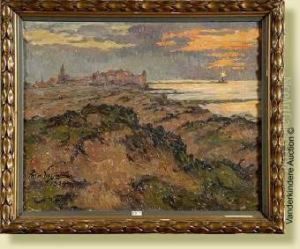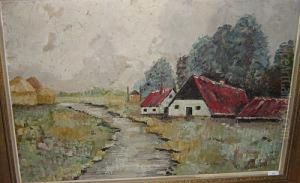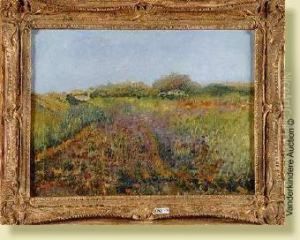Raymond Verstraeten Paintings
Raymond Verstraeten was a Belgian artist known for his work as a painter and sculptor. Born in Molenbeek-Saint-Jean, a suburb of Brussels, on November 18, 1892, Verstraeten showed an early interest in the arts. He studied at the Royal Academy of Fine Arts in Brussels, which has a long history of nurturing Belgian talent. During his time at the Academy, Verstraeten honed his skills in painting and sculpture, two disciplines that he would later integrate into his artistic career.
Verstraeten’s work was influenced by the artistic movements of his time, including Impressionism and later, Expressionism. He was particularly known for his landscapes, which often captured the essence of the Belgian countryside with a vibrant palette and dynamic brushwork. His sculptures, on the other hand, were noted for their robust forms and the sense of movement they conveyed, reflecting the vitality and the emotional intensity that Verstraeten sought to capture in his art.
Throughout his career, Raymond Verstraeten participated in numerous exhibitions, both in Belgium and abroad, establishing his reputation as a significant figure in the Belgian art scene. His work also reflects the turbulence of the era in which he lived, spanning two world wars that deeply affected Europe and the world. Despite the challenging times, Verstraeten continued to create and contribute to the cultural landscape of his country.
Verstraeten passed away on May 5, 1955, leaving behind a legacy that has been appreciated by generations of art enthusiasts. His contributions to Belgian art have been recognized in posthumous exhibitions and retrospectives, and his works are included in various Belgian museums and private collections. Although not as widely known internationally as some of his contemporaries, Verstraeten remains a respected figure among those familiar with Belgian modern art.


